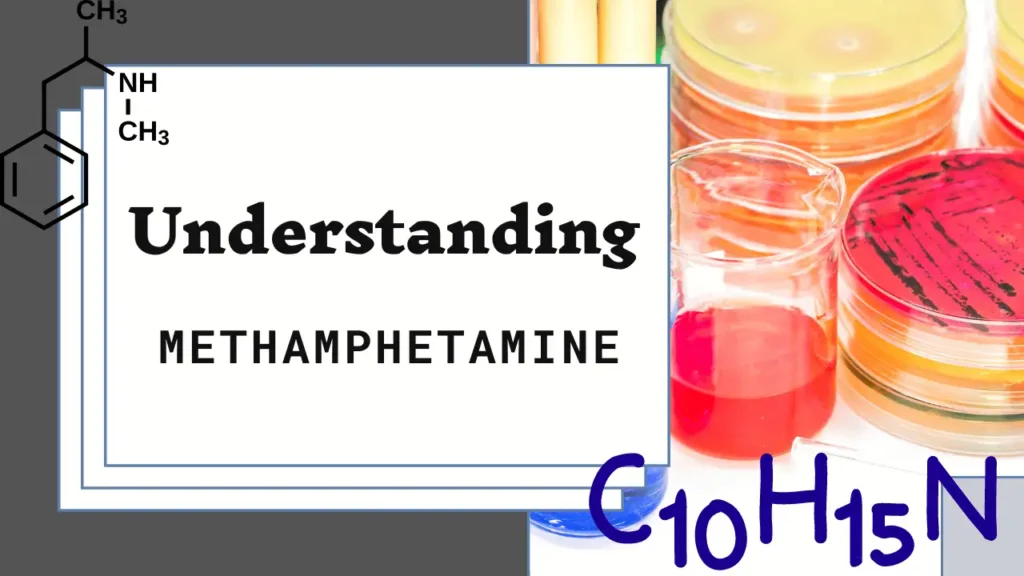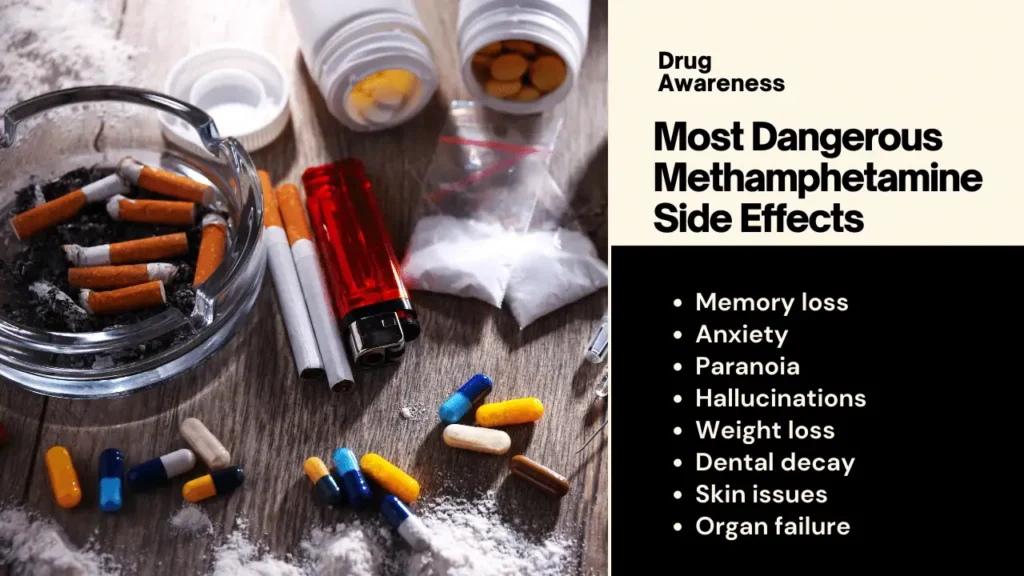Methamphetamine, commonly known as meth, is a potent central nervous system stimulant that has a significant impact on the body. Understanding its effects and how long it lingers in your system is crucial for both personal health and legal considerations. If you or someone you know is grappling with meth use and looking for guidance on detoxification, this article aims to provide valuable information. We’ll explore the duration meth stays in urine and discuss safe, medically-approved methods for detoxification, helping you or your loved one take a step toward recovery and a healthier lifestyle.
Purpose of the Article
The primary objective of this article is to equip individuals with foundational knowledge of the presence of methamphetamine in the body, particularly in the urinary system. The article intends to demystify the detoxification process, offering a clear, step-by-step approach to removing toxins safely under medical supervision. By the end of this resource, readers should be able to understand the importance of a medically-assisted detox, recognize the timespan meth can affect one’s system, and find pathways to support and treatment. We aim to be a source of encouragement for those seeking help, emphasizing that recovery is possible with the right methods and support systems.
We also recognize the need for this material to be educational and approachable for all readers, which is why we strive for clarity and simplicity in our explanations. Furthering our commitment to education, we encourage readers and their loved ones to learn more about methamphetamine through reliable resources such as the National Institute on Drug Abuse. It’s time to take informed steps towards health and recovery.
Understanding Methamphetamine

Methamphetamine is a powerful, highly addictive stimulant that affects the central nervous system. Its chemical structure is similar to that of amphetamine, a drug used to treat attention deficit hyperactivity disorder (ADHD) and certain sleep disorders. Meth, however, is known for its rapid release of dopamine, which stimulates brain cells, enhancing mood and body movement.
This surge of dopamine is part of what makes meth so addictive; it creates a quick and intense “rush” or euphoria that many users find pleasurable. However, as the body adapts to the presence of the substance, it begins to demand higher doses to achieve the same level of pleasure, leading to a dangerous cycle of dependence and abuse. Over time, meth use can lead to severe dental problems, known as “meth mouth,” skin sores, and an increased risk of infectious diseases, among other health issues.
In general, being informed about the realities of meth not only aids individuals in making better decisions for themselves but also empowers communities to look out for one another and fosters a supportive environment for those affected.
Risks & Dangers Of Meth
Methamphetamine use carries significant and multifaceted risks, impacting every aspect of a user’s life. The danger begins with the unpredictable purity and potency of the drug, often leading to overdose. It can also drive up blood pressure to dangerous levels, culminating in strokes or heart attacks even in young users. Meth is associated with behavioral risks as well, like increased aggression and impaired judgment, which may result in risky sexual behavior and heightened exposure to sexually transmitted diseases.
Most Dangerous Methamphetamine Side Effects

The most hazardous side effects of meth stem from its long-term impact on the brain and body. Chronic use can lead to irreversible harm, such as cognitive impairment and memory loss. The drug can also trigger severe psychological effects, including anxiety, paranoia, and hallucinations, often referred to as “meth psychosis.” In some cases, these psychiatric symptoms can persist for months or years after quitting the drug.
Dangerous Side Effects of Meth Abuse
Meth abuse can be catastrophic to physical health, including significant weight loss, dental decay, and skin issues. Organ failure, particularly of the heart and kidneys, is also a grave concern. Moreover, meth can alter brain structure and function, leading to difficulties with motor coordination and verbal learning, showcasing just how deeply this substance can disrupt one’s physical state.
Duration of Meth in the System
The longevity of meth in the body varies depending on several factors, such as the amount used and individual metabolic rate. Typically, meth can be detected in urine for up to 72 hours post-use, but this duration can extend to a week for chronic users. The effects experienced by the user are more fleeting, usually lasting up to 12 hours, yet this is enough time to cause profound changes in the brain and body.
How Long Does Meth Stay In Your System?

Meth Drug Test Factors
The duration that meth remains detectable in the system can be influenced by several factors. Body mass, hydration levels, and the overall health of the liver and kidneys play a critical role in processing and eliminating the substance. Additionally, the purity of the meth and the frequency of use can alter how long it stays in the system. Infrequent users may find that their bodies clear meth more rapidly than those who use it regularly.
How Long Does a Meth High Last?
Meth delivers a quick and intense high that can make users feel euphoric and energized. Typically, the immediate effects are felt within minutes when smoked or injected and can start within 30 minutes when ingested orally. This high can last anywhere from a few minutes to several hours, with the average duration being approximately 6 to 12 hours. It’s important to note that while the high dissipates, the drug itself may remain in the body and continue to affect brain chemistry even after the perceived effects have faded.
Determinants Of How Long Crystal Meth Stays In Your System
The presence of crystal meth in the body can depend on several individual determinants. Metabolic rate, for instance, can significantly affect how quickly meth is processed and eliminated. Individuals with a faster metabolism tend to expel the drug more rapidly. Another key determinant is the frequency of use; habitual users may have longer detection times due to accumulation in the system.
Factors That Affect Detection Time
Apart from individual health and usage patterns, the mode of administration also impacts detection time. Ingesting meth orally typically leads to a longer detection window compared to smoking or injecting. Additionally, the body’s pH level can influence how swiftly meth is excreted through urine, making it detectable for varying durations.
Average Meth Detection Times By Type Of Drug Test
Detection windows can vary widely based on the type of test administered. Urine tests tend to detect meth usage from 3 to 6 days post-use, whereas hair follicle tests can show meth presence for up to 90 days. Blood and saliva tests have shorter detection spans, typically detecting meth for about 24 to 48 hours after the last use.
Detection Methods
To identify meth in the system, several testing methods are used:
- Urine Testing: The most common form of drug testing for meth, providing a broad detection window.
- Blood Testing: Offers a shorter detection period but can be very effective at determining recent meth use.
- Saliva Testing: Less invasive than blood testing and can reliably detect meth use within a few days.
- Hair Follicle Testing: While not as commonly used due to higher costs and longer processing times, this method can trace drug use for an extended period.
Understanding Methamphetamine’s Effects on the Brain

Methamphetamine has profound effects on a user’s brain. It primarily increases the amount of dopamine, a neurotransmitter associated with pleasure, motor function, and reward. While dopamine naturally occurs in our brains, meth triggers its release at much higher levels, leading to the ‘rush’ or ‘high’ that users experience. This flood of dopamine not only affects feelings of pleasure but also can lead to a range of other emotions and behaviors, including increased energy and alertness, heightened concentration, and a decrease in appetite.
Long-term use of methamphetamine can lead to significant changes in brain structure and function, such as reduced coordination, impaired learning ability, and emotional and cognitive problems. These changes can persist even after a person stops using the drug, which is why understanding meth’s impact is crucial for prevention and recovery efforts.
How Long Does Meth Stay In Your Urine?
The duration that methamphetamine remains detectable in urine largely depends on several factors, including the individual’s metabolism, the amount used, the frequency of use, and overall health. Typically, meth can be detected in urine within about 2 to 5 hours post-use and can remain detectable for approximately 3 to 6 days. It’s important to note that these are general guidelines, and detection windows may vary from person to person.
For individuals undergoing a urine drug test, it’s crucial to understand that these tests are designed to identify methamphetamine’s presence through its metabolites – the compounds resulting from the body’s processing of the drug. The metabolites of meth stay in the body longer than the drug itself, which is why testing methods focus on these substances.
Remember, while a urine drug test can confirm the presence of methamphetamine, it does not measure the level of intoxication or impairment. If meth use is affecting your life or someone you know, seek professional medical advice and consider connecting with support groups to discuss treatment options.
Withdrawal and Detox
- Methamphetamine withdrawal is characterized by a set of symptoms that occur when an individual stops using the drug after regular consumption.
- Withdrawal symptoms can be physically and emotionally distressing, and a medically supervised detox program is highly recommended to safely manage them.
- Symptoms may include fatigue, increased appetite, agitation, and depressive symptoms.
- A comprehensive detox program includes medical supervision, counseling, and appropriate medications to ease withdrawal pains.
- Detox is often the first step in a comprehensive treatment plan that includes therapy and support groups for long-term recovery.
Remember that recovery is a journey, and while detox is an essential first step, ongoing support and treatment are critical for lasting change.
How To Mitigate Withdrawal Symptoms
Withdrawal from methamphetamine can be an intimidating process, and managing the symptoms effectively is important for a successful recovery journey. Maintaining a healthy lifestyle, including proper nutrition and regular sleep, can play a crucial role in mitigation.
Understanding the Risk of Addiction
Developing a methamphetamine addiction often begins with casual or social use but can quickly escalate as tolerance to the drug’s effects builds. It’s pivotal to recognize early signs of dependency to prevent the establishment of a more serious addiction.
Why is Meth Addictive?
Methamphetamine is highly addictive because it increases the amount of the natural chemical dopamine in the brain, which stimulates brain cells, enhancing mood and body movement. It’s its rapid release of dopamine that contributes to its high potential for addiction.
Health Risks
Chronic use of methamphetamine can lead to severe health issues, including dental problems, skin sores, and an increased risk of infectious diseases. Moreover, it can cause long-term changes in the brain, leading to cognitive and emotional problems.
Treatment and Recovery
Effective treatment for meth addiction typically involves behavioral therapies, such as cognitive-behavioral and contingency management interventions. Support groups and maintenance programs are also essential features of a comprehensive recovery strategy
Recognizing Meth Addiction
The alarm bells for methamphetamine addiction often ring quietly at first, manifesting as subtle changes in behavior and mood. Individuals may become increasingly secretive, exhibit sudden financial struggles, or show a noticeable break from their routine responsibilities. Understanding these warning signs is the first step to acknowledging the need for help.
Find Treatment for Meth Addiction
If you or a loved one is struggling with methamphetamine addiction, it is critical to seek professional treatment as early as possible. A combination of medically supervised detox and comprehensive therapy can pave the path toward recovery. Use resources like the Substance Abuse and Mental Health Services Administration (SAMHSA) to locate a treatment center that aligns with the specific needs of the individual.
How to Get Meth Out of Your System
Expelling meth from the body is a process that begins with cessation of use and continues with detoxification. The timeframe varies for individuals, depending on factors like metabolism, dosage, and frequency of use. Staying hydrated, eating nutritiously, and engaging in physical activity can potentially aid in flushing toxins from the body. However, it’s crucial to detox under medical supervision, especially when withdrawal symptoms are present.
Additional Considerations
In tackling methamphetamine addiction, it is also important to acknowledge and treat not just the physical but the psychological aspects. Long-term recovery is supported by mental health therapy, life-skills coaching, and sometimes medication-assisted treatment, which work together to repair and rewire thought patterns and coping mechanisms. Participating in local or online support groups can often provide the community support needed to sustain a drug-free lifestyle.
FAQs and Additional Information
- How long is meth detectable in urine tests?
Methamphetamine can typically be detected in urine for 1 to 4 days after the last use. However, this timeframe can vary based on several factors such as the individual’s metabolism, the frequency, and amount of use.
- What can influence how long meth stays in the system?
Several factors can influence the duration meth remains detectable in urine. These include the user’s age, body mass, hydration levels, the functioning of the kidneys and liver, as well as the purity of the meth used.
- Can certain foods or medications affect meth detection times?
While food does not significantly impact the detection time, certain medications and supplements may interfere with testing. Always inform the testing administrator about any medications or supplements being taken.
- Are there ways to speed up the elimination of meth from the body?
While there is no guaranteed method to rapidly cleanse meth from the body, staying hydrated, maintaining a healthy diet, and regular exercise may assist in the body’s natural detoxification processes. It is essential to avoid any methods that claim to ‘flush’ the system, as these can be harmful.
- What should I do if I have a positive urine test for meth?
A positive test for meth can have legal, employment, or personal consequences. It’s crucial to seek legal advice and support from health professionals. For assistance in dealing with the implications of a positive test and getting support for methamphetamine abuse,
How Long Does A Meth High Last?
Tips for Passing the Urine Test
If you are anticipating a urine test for methamphetamine, consider the following tips:
- Hydrate Appropriately: Drink an adequate amount of water to remain hydrated. Overhydration can dilute urine samples and possibly require retesting.
- Eat Balanced Meals: Consume a diet rich in nutrients that support your body’s natural detoxification systems.
- Exercise Regularly: Engage in consistent physical activity, which may help metabolize and expel toxins faster, although this will not have an immediate impact on a drug test result.
- Be Aware of Timelines: Understand how long meth can stay in your system to better evaluate the likelihood of a positive test.
How Long Should You Wait to Take a Urine Test After Using Methamphetamine?
Detection Time Frame: Methamphetamine Urine Testing
Typically, methamphetamine can be detected in urine for 1 to 4 days after the last use. However, this time frame can vary depending on individual metabolism, frequency of use, and the quantity consumed.
Individual Factors Impacting Detection
The detection window for meth in urine tests can be influenced by factors such as body mass, age, general health, and the efficiency of the individual’s liver and kidneys. Personal hydration levels can also affect test results.
Stop Using Methamphetamine
To ensure a clean urine test, discontinue meth use immediately. The longer the period between the last usage and the test, the lower the chances of detection.
Drink Plenty of Fluids
Hydration can aid your body’s natural detoxification processes. Ensure you drink water regularly but avoid excessive consumption right before the test.
Get Plenty of Rest
Adequate rest is crucial for your body’s recovery and detoxification. Aim for 7-9 hours of good quality sleep each night.
Eat a Healthy Diet
Foods that are high in antioxidants, such as fruits and vegetables, can support the body’s natural detox processes. Limit the intake of processed foods, and opt for a balanced diet to help clear meth from your system.
Conclusion
In summary, if you are preparing for a urine test and are concerned about the presence of methamphetamine in your system, it is essential to consider the detection time frame, and individual health factors, and implement proactive measures for detoxification. Abstinence from use, proper hydration, restful sleep, and a nutritious diet are key strategies that may enhance your body’s ability to eliminate traces of meth. Always remember that the most effective and certain way to pass a drug test is to refrain from drug use entirely. For those seeking help with substance abuse, professional medical advice and support from addiction services are highly recommended.






